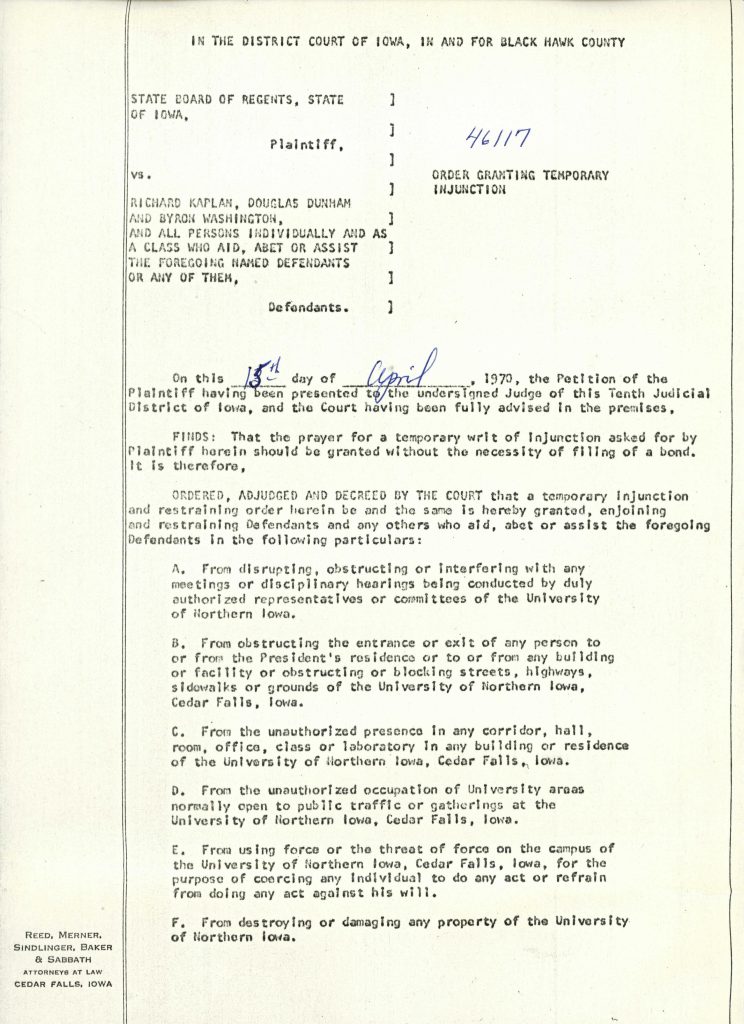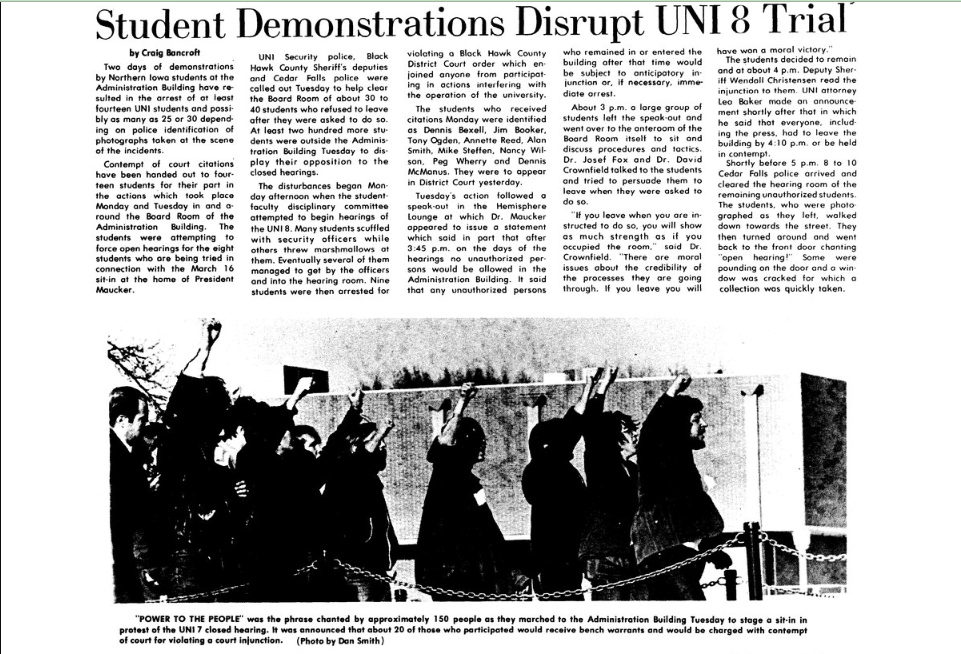The sit-in at President Maucker’s home in March of 1970 sparked many responses from students, administration, and the community. Here we aim to highlight multiple perspectives surrounding the sit-in and the disciplinary action that was set to follow.
Dissatisfied with the slow pace and lack of concrete action towards the establishment of a cultural center on campus, several members of the Afro-American Society along with additional Black and white students staged a peaceful sit-in at President Maucker’s home March 16-17, 1970. Following the sit-in, university administration pursued disciplinary action against those who obstructed campus operations, based on university policy at the time. Students and university personnel held differing opinions about the disciplinary process, as reflected in some of the materials highlighted here.
Due to the controversial nature of the event, the discipline committee decided that it would be unworkable to attempt to hold a totally open hearing. On the other hand, due to a sense of distrust by the students for the possibility of receiving justice from the committee, the students charged that they could not possibly receive a just hearing unless it was totally open. The first hearing attempt was interrupted by student protestors entering the hearing room. To prevent such interruption again, the university requested a court injunction against anyone in acts which interfered with the operation of the university. Multiple hearing attempts were interrupted by protestors and as a result many students served week long jail sentences.
President Maucker announced that no new hearings would be held until the disciplinary system was revised and approved. With this announcement, expansion of the Vietnam War into Cambodia, the events at Jackson State and Ohio State University, and the semester coming to a close, the sit-in became less significant moving forward. With these materials provided here we aim to highlight multiple perspectives within the university archives.







